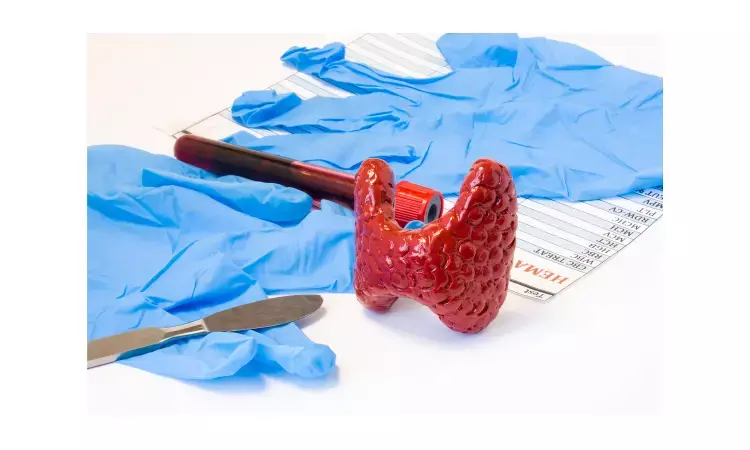- Home
- Medical news & Guidelines
- Anesthesiology
- Cardiology and CTVS
- Critical Care
- Dentistry
- Dermatology
- Diabetes and Endocrinology
- ENT
- Gastroenterology
- Medicine
- Nephrology
- Neurology
- Obstretics-Gynaecology
- Oncology
- Ophthalmology
- Orthopaedics
- Pediatrics-Neonatology
- Psychiatry
- Pulmonology
- Radiology
- Surgery
- Urology
- Laboratory Medicine
- Diet
- Nursing
- Paramedical
- Physiotherapy
- Health news
- Fact Check
- Bone Health Fact Check
- Brain Health Fact Check
- Cancer Related Fact Check
- Child Care Fact Check
- Dental and oral health fact check
- Diabetes and metabolic health fact check
- Diet and Nutrition Fact Check
- Eye and ENT Care Fact Check
- Fitness fact check
- Gut health fact check
- Heart health fact check
- Kidney health fact check
- Medical education fact check
- Men's health fact check
- Respiratory fact check
- Skin and hair care fact check
- Vaccine and Immunization fact check
- Women's health fact check
- AYUSH
- State News
- Andaman and Nicobar Islands
- Andhra Pradesh
- Arunachal Pradesh
- Assam
- Bihar
- Chandigarh
- Chattisgarh
- Dadra and Nagar Haveli
- Daman and Diu
- Delhi
- Goa
- Gujarat
- Haryana
- Himachal Pradesh
- Jammu & Kashmir
- Jharkhand
- Karnataka
- Kerala
- Ladakh
- Lakshadweep
- Madhya Pradesh
- Maharashtra
- Manipur
- Meghalaya
- Mizoram
- Nagaland
- Odisha
- Puducherry
- Punjab
- Rajasthan
- Sikkim
- Tamil Nadu
- Telangana
- Tripura
- Uttar Pradesh
- Uttrakhand
- West Bengal
- Medical Education
- Industry
Laser speckle contrast imaging helps prevent hypoparathyroidism after thyroidectomy: Study

USA: Reports on the rates of hypoparathyroidism or hypocalcemia after thyroidectomy vary widely, However, numerous studies have shown that identifying the glands alone is insufficient to improve hypocalcemia rates post-thyroidectomy.
A new study by Emmanuel A. Mannoh and the team has reported that Laser speckle contrast imaging (LSCI) is a promising technique and has the potential to help reduce the incidence of hypocalcemia after thyroidectomy as it provides surgeons with additional information during surgery to aid in the preservation of parathyroid function. This study is published in Thyroid journal.
The objective of the study was to establish a speckle contrast threshold for classifying a parathyroid gland as adequately perfused and evaluate the relationship between intraoperative LSCI measurements and postoperative outcomes of total thyroidectomy patients.
The study included 72 thyroidectomy patients. After thyroid resection, an LSCI device was used to image all parathyroid glands identified, and a speckle contrast value was calculated for each. An average value was calculated for each patient, and the data were grouped according to whether the patient had normal (16–77 pg/mL) or low levels of parathyroid hormone (PTH) measured on postoperative day 1 (POD1).
The results of the study were
• A speckle contrast limit of 0.186 separated the normoparathyroid and hypoparathyroid groups with 87.5% sensitivity and 84.4% specificity, 7 of 8 patients with low PTH on POD1 had an average parathyroid speckle contrast above this limit.
• 54 of 64 patients with normal postoperative PTH had an average parathyroid speckle contrast below this limit. Taking this value as the threshold for adequate parathyroid perfusion, it was determined that only one vascularized gland was needed for normal postoperative parathyroid function.
• 64 of 69 patients (92.8%) with at least one vascularized gland (determined by LSCI) had normal postoperative PTH, while all 3 patients (100%) with no vascularized glands had low postoperative PTH.
• Overall, the rates of temporary and permanent hypoparathyroidism in this study were 8.3% and 1.4%, was seen.
Mannoh and team concluded that "LSCI is a promising technique for assessing parathyroid gland vascularity. It has the potential to help reduce the incidence of hypocalcemia after thyroidectomy by providing surgeons with additional information during surgery to aid in the preservation of parathyroid function."
Reference:
Emmanuel A. Mannoh, Giju Thomas, Naira Baregamian, Sarah L. Rohde, Carmen C. Solórzano, and Anita Mahadevan-Jansen.Thyroid.ahead of printhttps://doi.org/10.1089/thy.2021.0093
Medical Dialogues consists of a team of passionate medical/scientific writers, led by doctors and healthcare researchers. Our team efforts to bring you updated and timely news about the important happenings of the medical and healthcare sector. Our editorial team can be reached at editorial@medicaldialogues.in.
Dr Kamal Kant Kohli-MBBS, DTCD- a chest specialist with more than 30 years of practice and a flair for writing clinical articles, Dr Kamal Kant Kohli joined Medical Dialogues as a Chief Editor of Medical News. Besides writing articles, as an editor, he proofreads and verifies all the medical content published on Medical Dialogues including those coming from journals, studies,medical conferences,guidelines etc. Email: drkohli@medicaldialogues.in. Contact no. 011-43720751


